- Home
- Prelims
- Mains
- Current Affairs
- Study Materials
- Test Series
 EDITORIALS & ARTICLES
EDITORIALS & ARTICLES
Jan 18, 2022
SECOND ALIEN MOON ORBITING A PLANET DISCOVERED OUTSIDE OUR SOLAR SYSTEM, IT'S BIG AND STRANGE
Recently, an exomoon was discovered outside the solar system.
 Special marriage act, 1954
Special marriage act, 1954
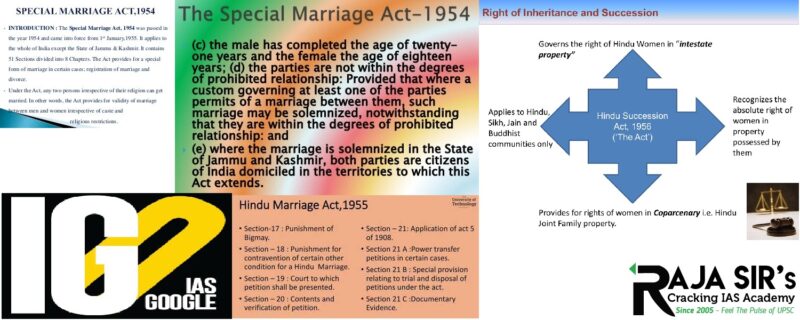
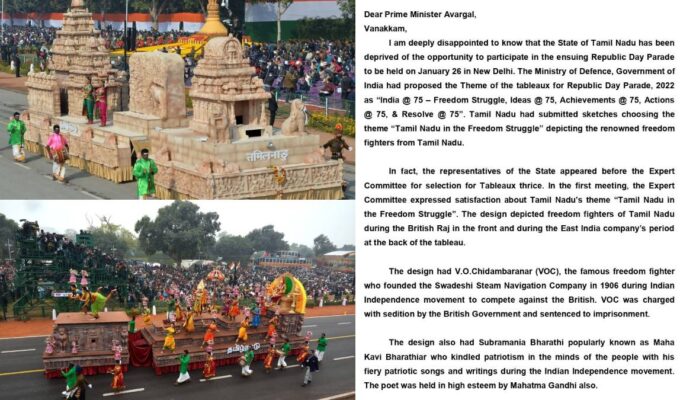 Genesis:
Genesis:
 Design Linked Incentive (DLI) Scheme:
Design Linked Incentive (DLI) Scheme:
 National Technical Textiles Mission (NTTM):
National Technical Textiles Mission (NTTM):
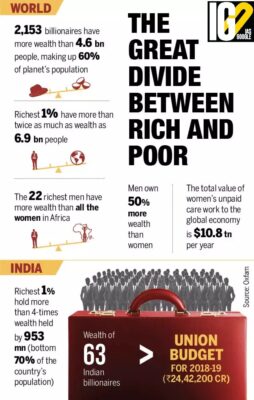 Key Highlights of the report:
Key Highlights of the report:
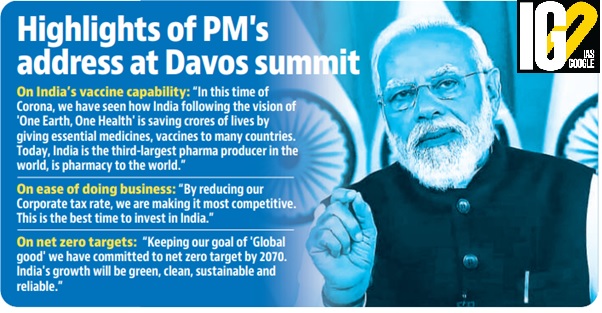 Highlights of speech
Highlights of speech
 Green Energy Corridor (GEC) scheme
Green Energy Corridor (GEC) scheme
 About the Atlas:
About the Atlas:
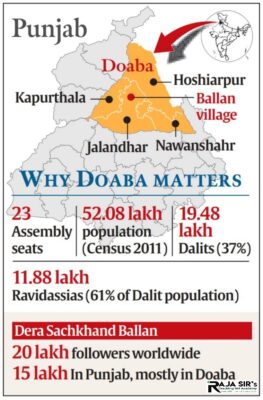 Ravidassias:
Ravidassias:
 Rare Earth Elements:
Rare Earth Elements:
- This is only the second time that such exomoon was detected.
- This moon’s diameter is roughly more than nine times the diameter of Earth’s moon.
- However, its mass and composition is not known now.
- It could be a rocky core with a light fluffy envelope or a thick atmosphere all the way down to some high-density core.
- The first exomoon candidate is even larger – roughly the size of our solar system’s planet Neptune.
- It is located approximately 8,000 light-years from Earth.
- An exomoon or extrasolar moon is a natural satellite that orbits an exoplanet or other non-stellar extrasolar body.
- The majority of detected exoplanets are giant planets.
- It is inferred from the empirical study of natural satellites in the Solar System that they are likely to be common elements of planetary systems.
 Special marriage act, 1954
Special marriage act, 1954
- The Special Marriage Act, 1954 has provision for civil marriage (or "registered marriage") for people of India and all Indian nationals in foreign countries, irrespective of the religion or faith followed by either party.
- Hindus, Muslims, Buddhists, Jains, Sikhs, Christians, Parsis, or Jews can also perform marriage under the Special Marriage Act, 1954.
- The Act originated from a piece of legislation proposed during the late 19th century.
- Henry Sumner Maine first introduced Act III of 1872, which would permit any dissenters to marry whomever they chose under a new civil marriage law.
- Marriages solemnized under Special Marriage Act are not governed by personal laws.
- The Special Marriage Act, 1954 replaced the old Act III, 1872. New act had major 3 objectives to provide:
- A special form of marriage in certain cases.
- For registration of certain marriages.
- For divorce.

- Each party involved should have no other subsisting valid marriage. It means, the resulting marriage should be monogamous for both parties.
- The groom must be at least 18 years old; the bride must be at least 18 years old.
- The parties should be competent in regard to their mental capacity to the extent that they are able to give valid consent for the marriage.
- The parties should not fall within the degree of prohibited relationship.
- Succession to the property of persons married under this actor any marriage registered under this act and that their children will be governed under the Indian Succession Act.
- If the parties to the marriage belong to Hindu, Buddhist, Sikh, or Jain religions, then the Hindu Succession Act will govern the succession to their property.
- A marriage can be registered in India either under the Hindu Marriage Act, 1955or under the Special Marriage Act, 1954.
- The Hindu Marriage Act only applies to the Hindus, whereas the Special Marriage Act extends to all Indian citizens.
- The Hindu Marriage Act allows for an already solemnized marriage to be registered.
- It does not provide for Registrar for solemnization of a marriage.
- Parties to the marriage must apply to the Registrar in whose jurisdiction the marriage is solemnized or to the Registrar in whose jurisdiction either party to the marriage has resided for at least six months immediately before the date of marriage.
- Both parties must appear with their parents or guardians or other witnesses before the Registrar within one month from the date of marriage.
- There is a provision for the Registrar, and subsequently, the District Registrar concerned to condone delay for up to five years.
 Genesis:
Genesis:
- The Union Defence Ministry is responsible for the Republic Day parade and the celebrations.
- Tableaux are made and represented by all the states, the Union Territories, Central Government departments, and a few constitutional authorities
- The Defence Ministry Invite and finalizes the participants of tableaux, on a prescribed theme.
- The theme of 2022 republic day parade is India@75 – Freedom struggle, Ideas @ 75, Achievements @ 75, Actions @ 75 and resolve @ 75.
- After receiving proposals from the participant, the Defence ministry’s Expert Committee (committee of distinguished persons drawn from various fields) analyses it.
- Then if found suitable, a 3D model of the proposed tableau is presented by a concerned participant in front of the Expert Committee.
- In a later stage, again the suitability, impact, visual appeals of the proposed tableau are analysed and final approval is granted.
- Launched by: Ministry of Electronics and Information (MeitY) in 2021.
- Implemented by: C-DAC (Centre for Development of Advanced Computing), under
- Objective: To reduce the problems of the domestic industry involved in semiconductor design to strengthen the semiconductor chip design ecosystem in the country.
- Beneficiaries:
- Indian companies (Private Limited Company or a Public Limited Company)
- It includes Indian MSMEs and Startups.
- Indian companies (Private Limited Company or a Public Limited Company)
- Design Infrastructure support: Reimbursement of up to ₹30 Lakh per application for fabrication of design and post-silicon validation activities.
- Product Design Linked Incentive (P-DLI): Milestones linked reimbursement of up to 50% of the eligible expenditure subject to a ceiling of ₹15 Crore per application.
- It is given for designing semiconductor goods and demonstrating them in the operational environment and volume of production.
- Deployment Linked Incentive (DLI): Reimbursement of 6-4% of net sales of designed semiconductor goods over 5 years subject to a ceiling of ₹30 Crore.
 National Technical Textiles Mission (NTTM):
National Technical Textiles Mission (NTTM):
- NTTM was approved by Cabinet Committee on Economic Affairs.
- Launched in: 2020
- Aim: To make India a leader of technical textiles around the world.
- Implementation period: 2020-21 to 2023-24
- An amount of Rs 1480 crore has been finalized by the Government for this mission.
- To get India at the highest position in Technical Textiles globally.
- To improve the penetration level of the technical textiles in India.
- The Mission is focused on the usage of textiles in different flagship missions, various programmes of the country.
- It comprises an amount of Rs. 100 crores.
- It has fundamental research at the fiber level which will aim at path-breaking products.
- It has application-based research in Agro-textiles, geotextiles, etc.
- A growth rate of around 15-20% per annum has targeted to take the level of the domestic market.
- The level of the market has raised to 40-50 billion USD.
- The current value of the export is around Rs 14000 crore per annum.
- The mission focuses to increase the export value by Rs 20000 crore by the year 2021-22.
- In order to meet the fast-growing technical textiles and challenges, education has promoted.
- Highly skilled labour has created to meet the requirements of this mission.
- The usage of textiles in dairy, Swachh Bharat Mission, agriculture, etc., will improve the costs of the economy.
- It will enhance soil and water conservation.
- This mission will improve agricultural productivity.
- Due to increased agricultural productivity, farmers’ income for every acre of land will increase.
- It promotes manufacturing and export activities in the country.
- The mission plans to promote start-ups and ventures.
- These are textiles materials and products manufactured for technical performance and functional properties rather than aesthetic characteristics.
- The products are divided into 12 broad categories: Agrotech, Buildtech, Clothtech, Geotech, Hometech, Indutech, Mobiltech, Meditech, Protech, Sportstech, Oekotech, Packtech.
- India shares nearly 6% of world market size of 250 billion USD.
- However, the annual average growth of the segment is 12%, as compared to 4% world average growth.
- Penetration level of technical textiles is low in India at 5-10%, against 30-70% in advanced countries.
- Nav-Kala Vithika - A digital art gallery showing artistic skills of young students of CBSE schools from across the country.
- Amiyotsav – An e-souvenir consisting of case studies on the preservation of the heritage of the country.
- Sahodaya School Complexes are a cluster of CBSE affiliated neighbourhood schools which voluntarily come together to share best practices and strategies for school education.
- At present, there are 260 complexes active throughout the country.
- Educative Management
- Professional Growth of Teachers
- Evaluation
- Value-Oriented School Climate
- Human Resource Mobilization
- Vocationalisation of Education.
- The idea of Sahodaya Schools Complexes was first given by the Education Commission, 1966.
- The National policy on Education, 1966 reiterated the need for promoting school complexes for meeting the quality of education.
- The idea of Schodaya School Complexes was further concretized when CBSE, jointly with National Progressive Schools' Conference (NPSC), organized a two-day conference in 1986.
- In 1987, CBSE in pursuance of the National Policy of Education, 1986 implemented National policy on Education in CBSE affiliated Schools-Programme.
 Key Highlights of the report:
Key Highlights of the report:
- Economic inequality has cut the income of 99% of the global population, and forced over 160 million more people into poverty.
- Hunger kills over 2.1 million people each year at a minimum.
- Women, ethnic minorities and developing countries have been the hardest hit by growing inequality during the COVID-19 pandemic.
- Gander based violence was reported by the increasing intimate partner violence during the lockdown.
- People dying in developing countries due to the pandemic is double when compared to people dying in the developed nations.
- The gap between the wealthiest and the poorest in society has grown during the pandemic
- Inequality contributes to the death of one person every 4 seconds.
- Inequality is also at play in the climate crisis, with the world’s richest 1% emitting more than twice as much CO2 as the poorest 50% of the world.
- Despite the 2021 COP26 climate negotiations the leaders of rich countries are failing to prevent further planetary destruction.
- Climate breakdown kills in a variety of ways: malnutrition, diseases, extreme heat, and more intense and frequent weather-related natural disasters.
- Tax the new wealth made since the start of the pandemic through permanent wealth and capital taxes.
- Invest the trillions that could be raised by these taxes in progressive spending on universal healthcare and social protection, climate change adaptation, and gender-based violence prevention and programming.
- Tackle sexist and racist laws that discriminate against women and racialized people, and create new gender-equal laws to uproot violence and discrimination.
- Define policies that will ensure women, racialized and other oppressed groups are represented in all decision-making spaces.
- End laws that undermine the rights of workers to unionize and strike, and set up stronger legal standards to protect them.
- Waive intellectual property rules over COVID-19 vaccine technologies to allow more countries to produce safe and effective vaccines to usher in the end of the pandemic.
 Highlights of speech
Highlights of speech
- India contributes 5% of global carbon usage but it’s commitment to phasing out non-renewable energy is 100%.
- He proposed the a 'P-3' approach.
- The P-3 approach stands for "pro-planet people".
- India is promoting 'Ease of Doing Business'. By reducing corporate tax rate, India is aiming to be most competitive in upcoming years.
- India's focus is not only on easing the processes, but also on incentivising investment and
- India is exporting essential medicines and vaccines by following its vision of ‘One Earth, One Health’.
- Throw away culture and consumerism has deepened the climate challenge. It is necessary to move from today’s ‘take-make-use-dispose’ economy to a circular economy.
- Climate change and the shape of the post-covid-19 world.
- Slowed international economic recovery and vaccine inequities.
- It is an international non-governmental organization based in Geneva, Switzerland.
- It was founded in 1971 by German engineer and economist Klaus Schwab.
- The Forum engages the foremost political, business, cultural and other leaders of society to shape global, regional and industry agendas.
- It strives in all its efforts to demonstrate entrepreneurship in the global public interest while upholding the highest standards of governance.
- Global Risks Report 2022
- It points to climate action failure, extreme weather events, and biodiversity loss and ecosystem collapse as the top three global risks.
- Chief Economists Outlook
- Global Gender Gap Report 2021
- Accelerating the mission to net zero emissions, on the economic opportunity of nature-positive solutions, and on cyber resilience.
- Bridging the vaccine gap, strengthening the resilience of global value chains besides building economies in fragile markets through humanitarian investing.
- To use data solutions to prepare for the next pandemic.
- The proposal allows for setting up of a 5-gigawatt (GW) transmission link from Pang (Leh) to Kaithal (Haryana).
 Green Energy Corridor (GEC) scheme
Green Energy Corridor (GEC) scheme
- GEC is an alternative transmission system for renewable energy (RE) power projects.
- It will ensure that the huge injection of electricity into the national grid from energy sources such as solar and wind does not threaten the grid.
- The objective of the green energy corridor is:
- to evacuate approx. 20,000 MW of large-scale renewable power
- to improve of the grid in implementing states.
- The transmission systems will be created over a period of five years.
- The project is expected to help India meet the climate commitments it made at the COP-26 summit in Glasgow.
- The first phase of the green energy corridor is under implementation in Andhra Pradesh, Gujarat, Himachal Pradesh, Karnataka, Madhya Pradesh, Maharashtra, Rajasthan and Tamil Nadu.
- It will help supply around 24GW of renewable energy by 2022.
- The first phase will add 9,700ckm of transmission lines and 22,600MVA capacity of substations at an estimated cost of ₹10,141.68 crore.
- The first phase has enabled India to achieved its nationally determined contributions target.
- Green Energy Corridor phase II is targeted to be set up with a total estimated cost of Rs. 12, 031 crores.
- Under this phase, 10,750 circuit kilometres of transmission lines and around 27,500 mega volt amperes transformation capacity of sub-stations will be added.
- The projects in this phase will aim to strengthen the power transmission capacity of state grids.
- It will generate large direct & indirect employment opportunities for both skilled and unskilled personnel in power and other related sectors.
- The Green Energy Corridor (GEC) scheme will help in achieving the target of 450 GW installed RE capacity by 2030.
- It will also contribute to the long-term energy security of the country and promote ecologically sustainable growth by reducing carbon footprint.
 About the Atlas:
About the Atlas:
- Developed by: Climate Research and Services (CRS) office, India Meteorological Department (IMD), Pune.
- It is based on 14 extreme weather events and the risks they pose to the local population, livelihoods and economy of each district.
- There are 640 climate vulnerability maps in the atlas.
- It will act as a reference for impact-based warnings that IMD issue for various regions.
- The atlas will inform about the impact of certain extreme weather events in their region.
- It can be used to plan climate-resilient infrastructure.
- The atlas will provide crucial information on what kind of disasters are probable, during construction in a coastal area.
- IMD was established in 1875
- It is the nodal agency under the Ministry of Earth Sciences (MoES) for the weather-related services in the country.
- Headquarters: New Delhi.
- IMD is one of the six regional specialized meteorological centres of the World Meteorological Organisation.
- It forecast tropical cyclones in the Northern Indian Ocean region, including the Malacca Strait, Bay of Bengal, Arabian Sea and the Persian Gulf.
- Provide current weather and meteorological information for optimum operation of weather sensitive activities like agriculture, irrigation, shipping aviation, off-shore oil exploration etc.
- Warn against severe weather phenomena which affects life and property.
- To conduct and promote research in meteorology and allied disciplines
- Archive meteorological information for use in various activities.
- Detect and locate earthquakes and evaluate seismicity in different parts of country for development projects.
 Ravidassias:
Ravidassias:
- The Ravidassias are a Dalit community of whom the bulk live in the Doaba region.
- The Ravidassia religion, also called Ravidas Panth, is a religious sect of the Sikhism, founded in the 14th century.
- A Ravidassia place of worship is called a
- Gradually, the dera in Ballan became the largest dera of the Ravidassias.
- The places of worship contain the holy book Amritbani Guru Ravidas Ji which contains all the hymns by Guru Ravidas.
- He was an Indian mystic poet-saint of the Bhakti movement.
- He is the founder of Ravidassia religion during the 15th to 16th century CE.
- One of his famous disciples was the saint Mirabai.
- Ravidas Jayanti is celebrated every year on 14th February.
- Philosophical values of Sant Ravidas include social justice, equality and fraternity, removal of social divisions of caste and gender, and promotion of unity in the pursuit of personal spiritual freedom.
- He envisaged a society based on equality and free from any kind of discrimination.
- He believed that a human soul is a particle of God and hence rejected the idea that people considered lower caste cannot meet God.
- He believed that the only way to meet God was to free the mind from the duality.
- He named a city near Lahore- ‘Be-gampura’ where there is no place for any kind of grief or fear.
- Ravidas's devotional Verses were included in the Sikh scriptures known as Guru Granth Sahib.
- The Panch Vani text of the Dadupanthi tradition within Hinduism also includes numerous poems of Guru Ravidas.
- In the Adi Granth, forty of Ravidas's poems are included.
- This compilation of poetry in Adi Granth responds to issues of dealing with conflict and tyranny, war and resolution, and willingness to dedicate one's life to the right cause.
- Thiruvalluvar, commonly called Valluvar, lived in 4th century BCE.
- It is believed that he lived in Mylapore town after he was born under a tree, in the neighbourhood of Chennai.
- The word ‘Thiruvalluvar’, means ‘the devotee of the Valluva caste’.
- He was born in Madurai, the capital of the Pandyas.
- He is regarded as a Avatara of Brahma.
- His wife Vasuki was a chaste and devoted lady, an ideal wife.
- He earned a living by weaving cloth and selling it.
- Thiruvalluvar is regarded as a cultural icon.
- He showed people that a person could lead the life of a Grihastha or householder, and at the same time, lead a divine life or a life of purity and sanctity.
- He showed people that there was no necessity to leave the family and become a Sannyasin to lead a divine life of purity and sanctity.
- He is known for his famous work "Thirukkural", which is considered as a very important text in Tamil literature.
- He was chosen as the greatest historical figure in the Tamil language by Tamil scholars unanimously.
- It is a collection of couplets on politics, love, ethics and matters concerning economics.
- It includes 1330 couplets called Kurals.
- These are divided into 133 sections with 10 couplets each.
- The text is based on 'dharma, artha and karma’, meaning ‘virtue, wealth and love’.
- It is known for its universality and secular nature.
- Written on the foundations of ahimsa, it emphasizes non-violence and moral vegetarianism as virtues for an individual.
- It redefined the cultural values of the Tamil land, by denouncing all the previously held misbeliefs that were common during the Sangam era.
- The text has been translated into at least 40 Indian and non-Indian languages, making it one of the most translated ancient works.
- The text has been dated variously from 300 BCE to 5th century CE.
- Thiruvalluvar Day is observed either on January 15 or 16as a part of the Pongal celebrations, to mark his immense knowledge, wisdom and contributions to Indian literature.
- A temple was built in the early 16th century within the Ekambareshwar complex in honour of Tiruvalluvar.
- A Temple-memorial called Valluvar Kotam was built in 1976, in Chennai.
- It houses one of the largest auditoriums in Asia, and a 133-foot-tall statue of Thiruvalluvar stands at Kanyakumari as well.
 Rare Earth Elements:
Rare Earth Elements:
- Rare Earth Elements (REEs) are a group of seventeen chemical elements that occur together in the periodic table, also known as Lanthanides.
- The group consists of 15 lanthanide elements (lanthanum, cerium, praseodymium, neodymium, promethium, samarium, europium, gadolinium, terbium, dysprosium, holmium, erbium, thulium, ytterbium, and lutetium) along with Scandium and Yttrium.
- Scandium and yttrium are considered rare earth elements since they tend to occur in the same ore deposits as the lanthanides and exhibit similar chemical properties.
- The rare earths are silver, silvery-white, or gray metals.
- The metals have a high luster but tarnish readily in air.
- The metals have high electrical conductivity.
- The rare earth metals naturally occur together in minerals (e.g., monazite is a mixed rare earth phosphate).
- India has the world’s fifth-largest reserves of rare earth elements, nearly twice as much as Australia.
- India has about 6 percent of global REE reserves.
- India produces a miniscule 1 percent of global supply.
- It imports most of its rare earth needs in finished form from
- India has an extremely high possibility of discovery of new deposits along its coastline and hard rock carbonatites that exist all over the peninsula.
- Large tracts of the Indian Ocean coastline from East Africa to Myanmar, Thailand, Indonesia, and Australia are also host to rich REE containing mineral sands.
- In order to take advantage of the REE reserve, the government set up, a Mini-Ratna Company, Indian Rare Earths Limited (IREL).
- It produces/sells six heavy minerals namely ilmenite, rutile, zircon, monazite, sillimanite, and garnet as well as various value-added products.
- IREL enjoys a monopoly over the primary mineral that contains REEs: monazite beach sand, found in many coastal states.
- IREL’s focus is to provide thorium, extracted from monazite, to the Department of Atomic Energy.









 Latest News
Latest News General Studies
General Studies